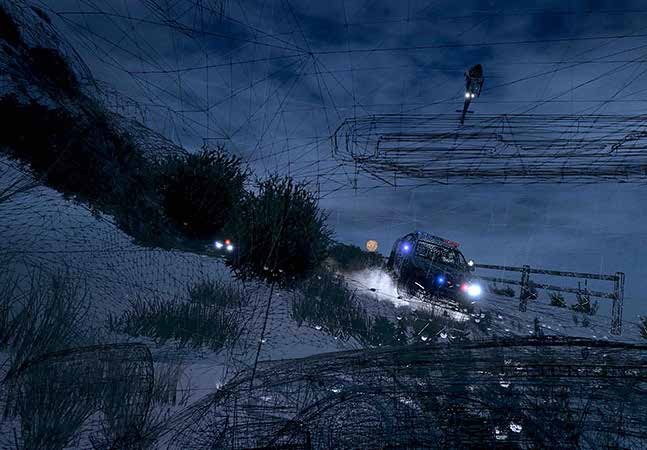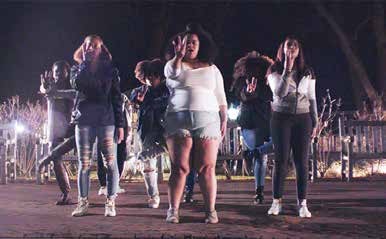(THIS ARTICLE IS MACHINE TRANSLATED by Google from Norwegian)
In the seminal sci-fi novel Neuromantic (1984, translated into Norwegian by Torgrim Eggen in 1999) William Gibson wrote about cyberspace and defined it as "a collective hallucination, experienced daily by millions of computer operators worldwide and by children who are taught mathematical concepts […]. A graphical representation of all data obtained from every single computer in the human system. An unimaginable complexity. Streams of light radiate into the non-spatial human mind, into clusters, and into the data constellations. Before they burn out, like the lights of the city.”
Neuromantic came out at a time when the word "cyberspace" was unknown, even to the majority of Gibson's readers. But when we fast forward to 2019, we find a credible setting for the abstract fiction novel from the early 80s. As the famous phrase from the author tells us: It is the place where banks look after your money, emails are exchanged, social media platforms are around – the virtual space has become as real a part of the daily lives of millions of people as they purely physical surroundings.
The countless liminal zones where cyberspace and reality intersect have had some bizarre, and even dangerous, outcomes. Ismael Joffroy Chandoutis has – with great creativity – researched one of these worrying zones. The result is the 21-minute long artistic documentary swatted. The film premiered during the International Documentary Festival of Amsterdam (IDFA) last November, and has since won much recognition for its distinctive qualities at a number of festivals worldwide.
What makes Swatted really stand out is Chandouti's ability to
composition.
swatted does not consist of footage filmed with a camera in the traditional way: It is a collage of found-footage taken from the internet's many streaming sites (where several gamers take part in and comment on the shared game), combined with dream-like "Machinima" animations made from the processed software for the popular computer game Grand Theft Auto V (GTA) from 2013. The latter conjures fragile quasi-cities populated by militarized police: Special Weapons and Tactics (SWAT) patrols control the streets and defy gravity in pursuit of bad guys.
swatted
Ismael Joffroy Chandoutis (b. 1988) made the film while studying at Le Fresnoy, a French film school that is clearly open to an experimental and radical approach to the subject. He throws us into the world of 'swatting', and we are made aware of a cunning and dangerous form of cyberneticism, where the gamers get their opponents' addresses and then call in a fake emergency message, which results in the unfortunate victims being visited of a "shoot first, ask later" SWAT team.
The film shows excerpts, both sound and images, from swatting incidents as far back as 2014. The opening scene shows a recording of a prank call to 911, in which a teenager claims to have shot his father, locked his mother and brother in a closet and "emptied petrol all around the house. I'm considering lighting up." It's a telling start to a work that gives us a frightening glimpse of an apparently widespread occupation, a kind of mix of robber streaks and an almost psychopathic lack of care and respect for others. We have ended up in a dark reality where "gaming has no limits". The gamers who play GTA and similar games (several of the actors in the documentary are "first-person shooters", also in SWAT-based scenarios), get a kick out of balancing on the edge of the illegal when they trouble others – from the safety of their own bedroom .

Chandoutis has dropped the comment track. Instead, he has indulged in an all-consuming, impressionistic examination of the swatting phenomenon. An intricate construction of virtual cityscapes – with buildings reduced to thin outlines and a hill that no longer exists – forms a fragile backdrop for the individual diplomas. In a touching way, they convey the traumas that those who are exposed to swatting struggle with. The filmmaker sensitively dives into a complex social phenomenon in our digital age. And in the context of American school massacres and frequent shootings (all examples in the film are from the United States), the callers' alleged brutality becomes even more believable.
Everson is always political, occasionally cursing, occasionally reflective and often challenging.
What gets swatted to really stand out is Chandouti's compositional ability as well as the editing of sound and images: the swatting events, with their pulsing tension and burning sense of urgency, alternate with computer-animated ethereal nocturnes, including the film's glorious conclusion. Chandoutis cuts to black as his SWAT team stomps on the scene in mid-air. And the filmmaker's next step should be watched closely.
Black Bus Stop
Kevin Jerome Everson (b. 1965) is, for his part, a well-established, creative and important voice in the international documentary film community. In several documentaries, he has focused on historical and contemporary aspects of the situation of African Americans. He is always political, occasionally cursed, occasionally reflective and often challenging. And Everson's work comes in a multitude of formats: Park Lanes (2015) shows the entire shift of a group of factory workers and lasts for eight hours, but he has also made over a hundred short films, some of them only a couple of minutes long. He is perhaps best known for Tonsler Park (2017), an 80-minute long recording from four polling stations in Charlottesville, Virginia, where he is a professor of art at the University of Virginia (UVA). As of 2013, Everson has had occasional collaborations with his colleague Claudrena N. Harold, professor of African American and African history and ditto studies. The latest result of their collaboration is Black Bus Stop – a passionate, sharp and undisciplined nine-minute celebration of the university's bus stop, after which the film is named. Like swatted the film was shown during the Vienna Shorts festival in Austria last June. Everson and Harold received the jury's prize in the international fiction/documentary competition.
Black Bus Stop is a passionate, sharp and undisciplined nine-minute celebration of the university's bus stop.
In August 2017, Charlottesville gained unwanted international attention due to Unite the Right – a mass rally of reactionary extremists and "white power" groups eager to show muscle in the aftermath of the inauguration of Donald Trump seven months earlier. The gathering – which was officially organized to mark opposition to the removal of the General Robert E. Lee statue from a public park in the city – was, as expected, an ugly affair: The atmosphere was tense, and it all came to a tragic end when a man from Alt-Right intentionally drove his car into a group of anti-fascist protesters, killing 32-year-old Heather Heyer from Charlottesville.
Survivability
In the wake of the incident, former UVA student JT Roane wrote on the website Cassius Life: "The outbreaks of violence in Charlottesville are neither peculiar nor unusual ... The very structure of this city and university perpetuates the tradition of white harassment and mob violence and reminds us of our history. This will continue unabated as long as the whites – including the liberals who are sort of 'shocked' – don't realize how violent this damn country is as a whole. But during my time at UVA and in Charlottesville, I also became aware that there are other possibilities. I got a taste of black people's resilience, beauty and survivability – in the midst of all this evil. We had the Black Bus Stop – a place right in the center of everything, where you could find black people at any time of the day, chatting, listening to music, stepping, swarming, flirting, laughing, living life to the fullest.”

Everson and Harold's film opens with a verité-style scene: It's midday, young students are sitting on the benches at the bus stop. The film music overlaps polyfont with dialogue fragments that emphasize the importance of the place, especially in the era when those who sat there "didn't have social media". The importance of meeting face to face is highlighted, the protagonists here are the stark opposites of the computer-addicted avatar people who hide in their bedrooms in Joffrey Chandoutis' swatted.
The lively and somewhat confusing introduction makes up only a small part of the film – the main part consists of choreographed dance (directed by Marjani Forte) and anthems performed by members of the student unions. It has become evening. Proud and straight-backed, the students recreate detailed and neatly executed rituals that link them to their comrades – and draw lines backwards in time, to the beginning of the 1900th century and their predecessors.
A simple bus stop is thus transformed into a makeshift battlefield, a stage for dynamic and excited forms of expression that show how African Americans take ownership of and continue their heritage. Like swatted when Black Bus Stop its climax in an almost otherworldly euphoria – but in the latter film it is people of flesh and blood who interact with each other in concrete, sometimes hostile, surroundings. And "they shall overcome".
Translated by Vibeke Harper


